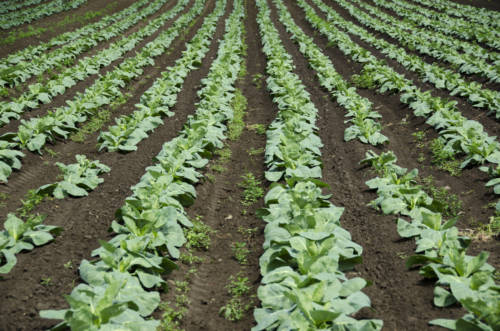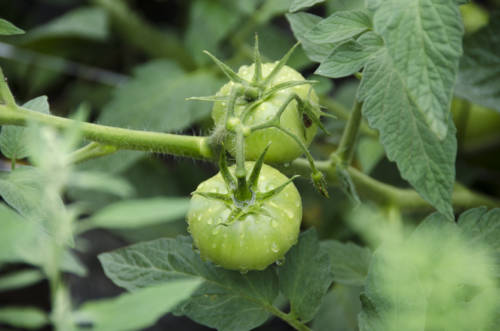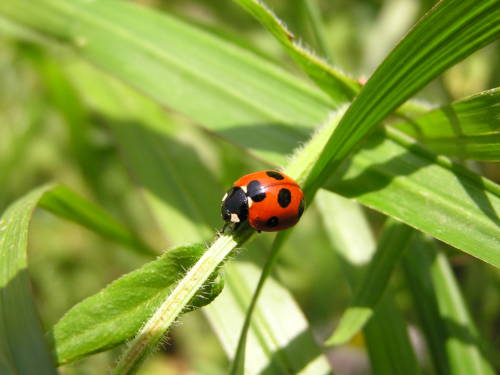
Food Garden Tips from Spier South Africa
One of the subtle joys of traveling in a foreign country is reading the local newspaper, and on a recent trip to South Africa, Garden Collage stumbled upon one such folio called The Newspaper, where we discovered some excellent gardening tips from a local grower named John Turner– the Zimbabwean gardener in charge of the Spier Hotel’s lovely food garden.
Turner’s garden– which grows 75 different species of herbs, fruit trees, and vegetables– supplies produce to the luxurious Eight restaurant at the Spier Hotel, a wine farm and chalet in South Africa’s famous Stellenbosch wine country.
Speaking with The Newspaper, Turner offered some of his best advice for growers in South Africa who are interested in starting their own food garden at home.
His tips, which arrive just in time for South Africa’s planting season, pack a lot of information that would be valuable to any gardener– even those of us preparing for Fall in the Northern Hemisphere.
Sometimes we forget the basic Do’s and Don’t’s of planting in our region: you have to remember that timing is key, and that there’s a lot to be gained from following a sequence of crop rotation.
Below, Garden Collage has excerpted some of Turner’s advice, as told to his local newspaper (which we read gleefully in the car on our way to hike in the Kagga Kamma Wilderness Reserve). We hope you enjoy these helpful tips as much as we did.
Food Gardening Tips
Below, find John Turner’s “Tips For Starting Your Own Food Garden”, via The Newspaper:
Layout Is Everything
Before you start, think carefully about the garden’s layout: factor in the distribution of sunlight (orientation and aspect), access (paths and walkways), distribution of water (irrigation systems), wind (windbreaks and sheltered sites). Take note of unique niches such as hot spots, shady areas, areas prone to wind or frost, and where you should place longstanding perennial plants (fruit trees or other perennial shrubs or herbs).
Avoid Deep Digging
Avoid too much deep digging (unless absolutely necessary) as this disturbs soil life and increases oxidation of soil organic matter. Rather build soil upwards, creating raised/boxed beds.
Keep Soil Covered
Keep soil covered as much as possible with living groundcovers or non-living organic mulch (straw, bark, or leaves).
Compost is Key
Have regular supply of compost to keep your soil alive and full of vitality. If you don’t have space for a conventional compost heap, set up a worm farm – this takes up very little space and is an efficient way to recycle kitchen and garden waste material. The liquid “tea” from the worms can be diluted and used as a foliar spray on your plants. The worm casts can also be used for raising seedlings, on beds, and to make a transplanting paste.
Timing Is Critical
Timing is key. Plant in late September/early October for summer or warmth dependent crops (cucumbers, beans, brinjal, peppers, tomatoes, courgettes, melons, maize, squashes and pumpkins). Plant in March/early April for cool season crops (broccoli, Brussels sprouts, cabbage, cauliflower, coriander, English spinach, kale, leeks, onions, oriental greens and rocket). A few varieties can be grown throughout the year – such as carrots, beets and Swiss chard. Lettuces usually do best during Spring and Autumn.
Avoid Monocultures
Monocultures are unnatural and there is increasing evidence to show that companion planting (when you plant different species next to each other) improves the flavor of your vegetables and reduces pest problems. For example, plant tomatoes with carrots, onions and basil; plant Swiss chard spinach and beetroot with beans in the summer or onions in the winter; the cabbage family (brassicas) with celery, onions/leeks and aromatic herbs.
Maximize Vertical Space
Maximize vertical space: locate tall crops in the middle of growing areas, and shorter plants on edges.
Embrace Perennial/Biennial Culinary Herbs
Use perennial/biennial culinary herbs on edges of growing areas for easy access and to give structure to growing areas.
Embrace Your Garden’s “Wild”
Think of your garden as an ecosystem rather than simply as a vegetable plot. Create refuges for beneficial pest predators. Hedges (rosemary, sages and lemon verbena are some possibilities) provide a home for ladybugs, praying mantises, spiders, wasps and chameleons. Small cairns of rocks/stones encourage lizards and toads. For the more adventurous, a bat house provides guano and the bats themselves devour large numbers of moths and nuisance flying insects.
Only Water In The Evening
Try to water your garden in the evening where possible. Plants have been shown to “drink” between 15.00 and 03.00 so this practice is aligned to natural cycles and also greatly reduces loss by evaporation.
Crop Rotation Is For Everyone
Try to follow a sequence of crop rotation. Start with leaf crops (cabbage, spinach, lettuce), then root crops (beetroot, carrots, onions, potatoes, radish, and turnips), then fruit crops (maize, cucumbers, courgettes, brinjal, peppers, tomatoes, melons, squashes and pumpkins), and lastly legumes (all the many bean varieties or, in winter, peas and broad beans).




































